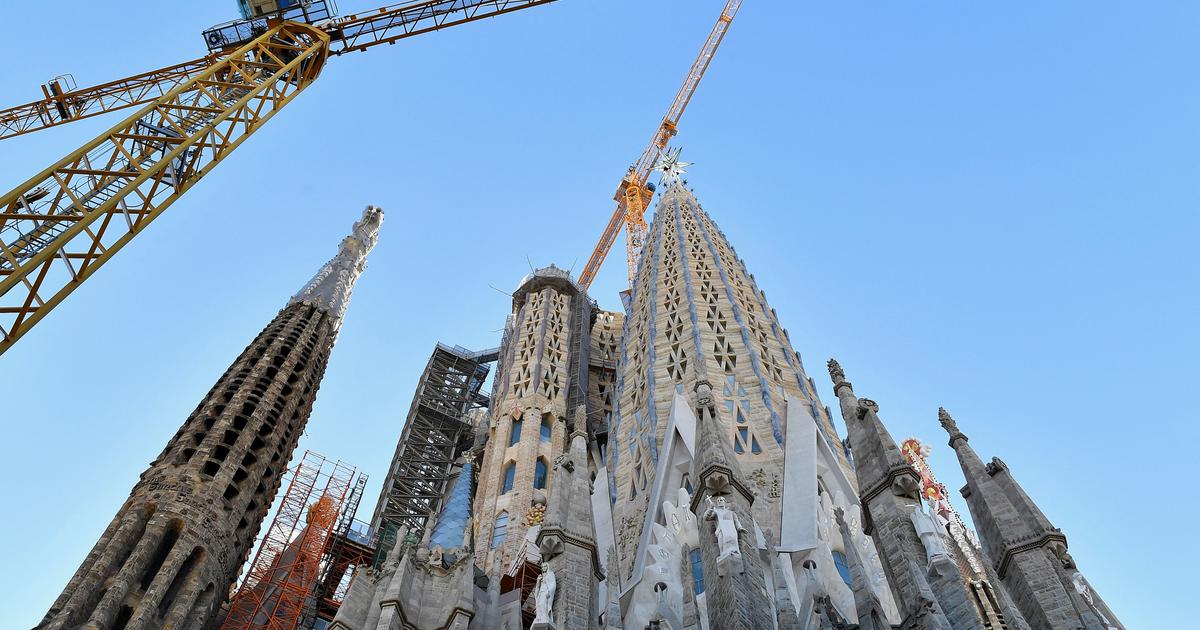The trip to Paris that Antoni Gaudí (Reus, 1852-Barcelona, 1926) never undertook during his lifetime, finally makes it part of his work almost a century after the death of the most universal Catalan architect.
The Musée d'Orsay in Paris opens next Monday the first major monographic exhibition on Gaudí in France, an exhibition that tries to unravel an artist whose name is known by practically all French people thanks to his masterpiece, the Sagrada Familia in Barcelona, but who very few understand in all its magnitude and complexity.
More information
Gaudí would like the Loop
The Parisian exhibition takes the baton from the exhibition
(Re)knowing Gaudí.
Fire and Ashes
,
which has been exhibited since the end of last year at the National Art Museum of Catalonia (MNAC) in Barcelona.
And it has been supervised by the same general curator, Juan José Lahuerta, one of the greatest specialists in the Barcelona architect, director since 2016 of the Gaudí chair at the Universitat Politècnica de Catalunya.
But not an exact replica, since it is not aimed at the same public nor is it shown in a city like Barcelona, where Gaudí breathes through all its pores, but rather in a Paris that also coexists, although in a different way, with the art nouveau that led to the most unimaginable and innovative extremes the Catalan architect.
Dressing table of the Palau Güell designed by Antoni Gaudí that is exhibited until July at the Musée d'Orsay in Paris.Marc Vidal i Aparicio
The Parisian one is a more "compressed" exhibition than the one in Barcelona, but one that "maintains all its originality" and that seeks to demonstrate that Gaudí was a "very complex artist who is far from the legend of the isolated artist, he was an exciting and passionate artist ”, stated the president of the Musée d'Orsay, Christophe Leribault, at the presentation of the exhibition.
That is why, said Isabelle Morin Loutrel, one of the curators of the Paris exhibition, that it follows a different logic.
“We have tried to reduce the list of objects and works [in Barcelona there were more than 600] to truly show what is indispensable and spectacular”, he explained to journalists on the eve of the official opening, which will be attended, on Monday, by the president of the Generalitat, Pere Aragonés.
In addition, as visitors to Paris “will not be able to visit a Gaudí building afterwards”, the French exhibition favors photographs and sets that bring the Catalan architect's physical and “mental” workshop closer together.
Despite this, the French curator trusts, visitors will be able to meet a Gaudí "in all his personality as a creator and architect and plastic".
The common thread for this is the well-known Sagrada Familia.
But his masterpiece is not the core of the exhibition, he points out.
“The heart of the exhibition is the entire creation process of Gaudí, the character as an architect who revolutionized the city of Barcelona, but also the codes of construction, of decoration, thanks to the very important help he had from his friend ( and patron) Eusebi Güell, who allowed him to develop all his imagination” and with whom the architect shared “eccentricity, singularity and a taste for Catalonia and for art for all, despite coming [Güell] from the bourgeoisie”, he points out.
Furniture designed by Antoni Gaudí that is exhibited until July at the Musée d'Orsay in Paris.IAN LANGSDON (EFE)
Symbolically, the Parisian visitor enters the Gaudí exhibition, which will remain open until July 17, through the hall that the architect conceived for another of his best-known works, Casa Milà (La Pedrera).
From there, you will be able to immerse yourself in Gaudí's workshop with a 3D reproduction of the space where he imagined and modeled his particular artistic world, highly inspired by nature and with international references.
Like that of the French architect Eugène Viollet-le-Duc, responsible for the renovation of the Notre Dame cathedral, a stone's throw from the Musée d'Orsay, and also creator of the famous spire of the Gothic temple that was destroyed in the devastating fire of the Parisian church which will be three years old next week.
Precisely, the current exhibition makes constant nods to this relationship in space and time —Viollet-le-Duc belongs to a generation prior to Gaudí's— and to the possible inspirations of the Catalan in the French, whom he surely studied.
The Musée d'Orsay in fact takes advantage of the Gaudian exhibition to show, for the first time in public, some designs that the French architect made for the decoration of the bestiary on the façade of the Abbadia Palace in Hendaye, which have a surprising coincidence with some elements of the Catalan.
The crocodile on a staircase designed by Viollet-le-Duc surprisingly (or not) resembles the famous salamander at the entrance of Barcelona's Parc Güell, just as the snails that the French architect also imagined are found in a similar way in the Sagrada Familia that, despite everything,
Exclusive content for subscribers
read without limits
subscribe
I'm already a subscriber









